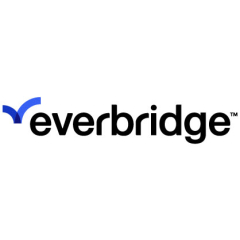What is our primary use case?
We have three instances of xMatters. One is for customer support, one is for our internal IT, and the third, that we recently procured, is the SaaS version.
We have integrated two of our xMatters instances, the IT instance for ITSM incident management, and the SaaS version. We also recently worked on integrating customer support between xMatters and both instances, so that xMatters can be triggered from the SaaS instance and there will be a notification in the customer support instance. And vice versa: An alert from customer support will reach out to the on-call in the SaaS instance. And now we are working on integrating xMatters with change management and SaaS. In addition, we integrated xMatters with Salesforce.
How has it helped my organization?
At one time I was working in our global network operations center. We had a few difficulties in reaching out to the on-call resource. I would call someone only for that person to say, "Okay, I'm not on-call this week. You should call this person," and that person's number was unreachable. Then I would have to call the first person again and he would say, "Okay, now call this person," and he might also not be the right person. It was a time-consuming process and there was a delay in dealing with the service disruption. Implementing xMatters has helped us to identify who the on-call person is, and the built-in escalation really helps.
Managers can also get an idea of which on-call resources acknowledged an alert, and whether it was escalated to the next level or the third level.
Also, the targeted, content-rich notifications have helped to reduce response times, although we haven't measured by how much.
We have only integrated our Sev-1 incidences. Once a Sev-1 is generated, an xMatters alert is automatically triggered and the on-call person acknowledges the event. With that acknowledegment, the incident's status is changed to "in progress." As a result, responses to incidents are at 100 percent. We also have a checkpoint. When there is an event, a NOC engineer reaches out, every 15 minutes, to the person who has acknowledged the event, about whether there is a service disruption or not. With the quick responses to alerts, we have time to figure out what our outage notification or disruption message will be to our end customers. All of this definitely helps us to reduce the communication involved, as well as expedite the restoration of service.
What is most valuable?
xMatters is helpful for getting the right on-call resources. That is a key factor. It is also very user-friendly, and just a little documentation helps you to understand things such as how on-calls are configured, how groups are configured, and how users update their on-call devices.
We're also able to specify messages for the different channels, such as text messages, voicemail, or email. That is quite helpful for us.
In addition, xMatters' reporting capabilities help managers to identify the peers and escalation that we have configured. It helps them see how many times an on-call either did not receive an alert or escalated it.
Another key feature set that xMatters offers is the API calls through which you can trigger xMatters. Because every application has its API, we just have to set up small workflows.
We also use xMatters logs on a daily basis. All incidents are created in ITSM and the logging capabilities are easy to use. We have integrated our xMatters with Okta. As a result, the authentication process takes care of the username and password. We haven't provided our users a bypass link so that they can directly log in to xMatters. Users have to log in using their Okta authentications.
With xMatters we have the flexibility to grant permissions to managers so that they can update their on-call schedules. They can change who is available in the next week, who is on the roster, et cetera. Managers can decide which person will be working on which shift. Some of our teams work 24/7, some work 24/5, and a few of our teams work 18/5. Managing all of them is a tough job and we addressed it by having the managers update their own on-call lists.
What needs improvement?
We have integrated two different xMatters instances. When something triggers in xMatters, we get a message in that instance about who responded, the device type, et cetera. But if we try to trigger it to a different instance, we don't get that kind of information. For that scenario we have built a workaround to get the details of the event, and that we have received a response for it. That's one of the major things that could be improved.
Another issue is related to the reporting. We have to know what keyword to search for. When we type something in, we get a few suggestions. If the suggestions are not enough, we need to go back to the specific event message and look at the actual event, and learn what needs to be updated based on that. We get that information from the Properties tab.
Thirdly, we have to create an Excel sheet for onboarding users and then upload it. But if an employee resigns, we don't have any checkpoints to validate whether the user is still active or not. We have to do that manually every week: Check who has left the organization, and do a cross-check on whether that person had any licenses or signed in to xMatters. If so, we have to make that profile inactive for a month and then release the license.
Finally, I get regular updates on the new features that are being released by xMatters. If they could provide a short presentation or video on these new features, and how we can leverage them based on our use case, that would really help.
For how long have I used the solution?
We initially procured xMatters back in 2017 or 2018. We were looking to share these kinds of ideas with our internal and external customers who use xMatters, as well as ITSM.
What do I think about the stability of the solution?
xMatters is stable.
I only recollect once that we needed some maintenance, but that was also part of the 99 percent availability. The maintenance was done with zero downtime. I don't recall that we have had to do any maintenance on xMatters.
What do I think about the scalability of the solution?
In terms of scalability, I'm managing two different instances of xMatters and someone else is taking care of the customer support instance. I believe that instance has 9,000 licenses. For IT we recently purchased 30 more so now we now have 180, and for our SaaS instance there are 200.
Whether we will increase our usage of xMatters will depend on how our business develops.
How are customer service and support?
The technical support team is really helpful. They know what we are asking and what we are looking for. They don't work by saying "Step one, step two, step three." Whenever we submit a ticket, even if it is a P3 or P4, we immediately get an acknowledegment that they are reviewing our request and that they will get back to us. It's not like, "Okay, it's P4, let's respond after two or three days." Overall, their tech support has really helped us. And if the requirements or the scope go beyond their capabilities, they will involve our customer relationship manager. Once he is in the picture, if required, he will tell us we need to involve professional services.
But so far, there has not been an issue that a support person was unable to resolve for us. Some of the time there has been some back-and-forth communication, but in the end, we have been provided with a resolution.
How would you rate customer service and support?
Which solution did I use previously and why did I switch?
Before xMatters we had a small portal where people could update their mobile numbers, whereas the ITSM product contained the on-call list. Managers would go there to update that list. But it was not being maintained properly and we had a tough time reaching the actual on-call person. With our first priority being to return our service back to available when there is a disruption, we got to know xMatters and replaced the old system.
How was the initial setup?
As this was a new application for us, we were not aware of what might need to be done. The professional services team was engaged at some point and, through them, we got a few ideas about how this would help us, how we could integrate it, how the user profiles are built, how the groups are created, et cetera.
The process of integrating xMatters with other applications was not too difficult. We already have the GIT files readily available, so it was just a matter of updating the scripts, connecting the dots, and it was really helpful in building the workflows.
What was our ROI?
The issue that is impacting things is the licensing. The features are really good. The solution really helps us to find the appropriate person, per issue, and to resolve each one as soon as possible. But what makes things difficult is the licensing. We have to manage the number of users we onboard, and we need a buffer of 10 or 20 licenses because in an emergency or crisis situation, we might need all those buffer licenses.
Still, we have definitely seen cost savings when we are restoring a service disruption. When a Sev-1 is initiated, xMatters is triggered and calls the right person and he acknowledges. On a weekly basis it saves us between $100 and $200.
What's my experience with pricing, setup cost, and licensing?
Every customer would like a free ride, of course, and being a customer, I definitely feel the pricing is too high.
A caveat here is that initially we procured 150 licenses and we have almost 1,500 users in IT. We had to come up with a few ideas for determining which users get a license and which users don't need one. Due to the limitation of the number of licenses, we were unable to integrate the user profiles with Active Directory.
Also, having that many licenses versus that many employees won't help us. It would be good if there was a feature where we could trigger all the users we need in a single go. That would really help in a crisis situation.
Which other solutions did I evaluate?
We didn't evaluate any other options. When we had the xMatters demo and we felt that it was the right product for us. The integration ability was the main aspect, as were the user profiles, the on-call list, and the delivery channels for messages. All of those really helped in our decision to purchase the xMatters solution.
What other advice do I have?
The biggest lesson I have learned from using xMatters is that end-users have to manage their own profiles and know their availability for the on-call schedule. Also, if someone is not available to be on-call, the absence/replacement feature in xMatters really helps. The replacement enables us to know who is replacing whom, from when to when, and from which team. And with the recent launch of workflows, we can build our own workflows. I reviewed a few videos on integrating Teams or Skype with xMatters and that looks like a key feature.
The documentation from xMatters, in general, is very clear and the support is very helpful.
I use xMatters on a day-to-day basis. I have an eye on all three instances we have. I know which user is replaced by which user. And whenever the support team reaches out to me saying, "This event was triggered to me, but it should not have been triggered to me," we have all the logs to help us identify why that event was triggered to that person or why it didn't trigger to a given person. If we need any more help, again, the support team is there. We just submit a request and we get assistance.
It has been a good journey over the last three years, getting more details about, and insights into, the product. It really helps us.
Disclosure: My company does not have a business relationship with this vendor other than being a customer.










